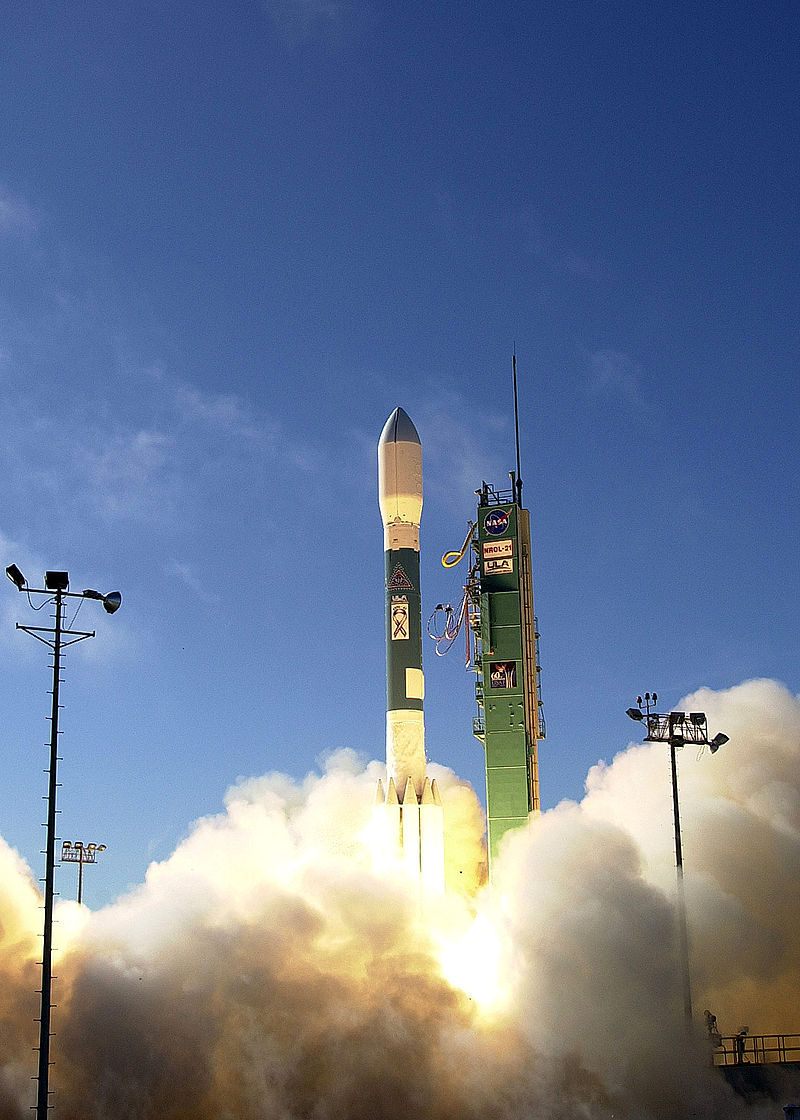
Ten years ago, on the stroke of 4 p.m. EST on 14 December 2006, a mighty Delta II booster roared away from Space Launch Complex (SLC)-2W at Vandenberg Air Force Base, Calif., carrying a classified payload for the National Reconnaissance Office (NRO). Its liquid-fueled first-stage engine and six of its nine solid-fueled strap-on boosters ignited on the pad, providing an initial boost toward its Low-Earth Orbit (LEO) destination. Later in the ascent, the six strap-ons were jettisoned and the remaining three were “air-lit.” The first stage later separated from the vehicle and an Aerojet-furnished second stage was ignited to continue the flight to LEO. Within minutes of departing the mountain-ringed site of Vandenberg, the Delta II had successfully delivered the NROL-21 radar-imaging reconnaissance satellite—also codenamed “USA-193”—into orbit. Unfortunately, NROL-21 proved a costly failure: within months, it malfunctioned and was intentionally destroyed via a missile fired from the warship USS Lake Erie in February 2008.
The embarrassing failure of NROL-21 did not, however, detract from the success of the launch itself, which marked the first flight conducted by United Launch Alliance (ULA). The Centennial, Colo.-headquartered launch services company had officially come into being just two weeks earlier and, as it observes its 10th anniversary this month, can now boast a 100-percent mission success record, according to its customers, across 114 flights of its Delta II, Atlas V, and Delta IV vehicles. As outlined in a recent ULA commemorative video, a multitude of payloads for scientific, military, and commercial purposes have been delivered to a variety of Earth orbits and beyond, into the very depths of our Solar System.
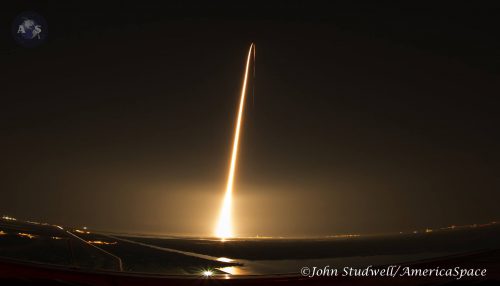
Speaking before the 1 December anniversary of the company’s formation, ULA CEO Tory Bruno highlighted this “unmatched reliability, schedule certainty and 100-percent mission success.” He added that processing times for Atlas and Delta vehicles and their payloads have been cut by two-thirds and that “strategic partnerships with key suppliers” have allowed for a reduction in supply-chain costs by 36 percent. Mr. Bruno explained that ULA had “made the ordinary, extraordinary” and offered the promise of a bright future, as the company moves toward “a sub-$100 million rocket launch service,” through its recently-unveiled RapidLaunch and RocketBuilder programs. Moreover, the company introduced its new Vulcan rocket last year, with an anticipated superiority in terms of “reliability, cost, weight and capability” when it enters service in 2019.
ULA’s genesis extends back to the mid-1990s, when Lockheed Martin and Boeing were successful bidders for the U.S. Air Force’s Evolved Expendable Launch Vehicle (EELV) contracts. Lockheed Martin based its EELV architecture upon its Atlas V and Boeing focused on its Delta IV, which flew their maiden missions in August and November 2002, respectively. The two companies developed common booster cores for their respective vehicles, emphasizing standardization and the use of proven, reliable technologies, but a few years later claims of industrial espionage led to complex litigation which ended in a decision to merge their efforts and form ULA. For its part, the Air Force had long sought such an alliance, hoping that it would enable the Atlas V and Delta IV to function in parallel, thereby keeping both systems viable, reducing cost overheads, and avoiding an unnecessary duplication of effort.
Dovetailed into these plans was the highly reliable Delta II, first flown in February 1989, which went on to support the maiden mission of ULA. And it was the Delta II which carried much of the cargo load for the first several years, flying eight of ULA’s 13 missions in 2007 and transporting a mixture of Earth observation, commercial imagery, magnetospheric research, navigation, and early-warning satellites aloft, as well as despatching NASA’s Phoenix lander towards Mars and the Dawn spacecraft on its journey to the asteroids Vesta and Ceres. In fact, 2007 also saw ULA’s first flight of an Atlas V in March and its maiden voyage of a Delta IV Heavy—equipped with a trio of side-by-side Common Booster Cores (CBCs)—in November. The year was marred somewhat in June, when a pair of Naval Ocean Surveillance Satellites (NOSS) ended up in lower-than-planned orbits, following a premature shutdown of the Atlas V’s Centaur upper stage. However, the satellites were eventually injected into their proper orbits under their own propulsion and the customer declared the mission overall to be a success.
Over its first decade of operations, ULA has flown 114 missions, counting last week’s successful flight of the latest Wideband Global Satcom (WGS-8). Its next launch is tentatively scheduled for Sunday, when an Atlas V rockets out of Space Launch Complex (SLC)-41 at Cape Canaveral Air Force Station, Fla., carrying EchoStar-XIX for high-speed internet provision toward Geostationary Transfer Orbit (GTO). Sunday’s mission will be only the fourth commercial communications satellite ever launched by ULA, in part due to high costs. The 14,625-pound (6,635-kg) ICO-G1 spacecraft was the largest and most massive commercial communications satellite in the world at the time of its April 2008 launch. More recently, a pair of Atlas Vs have delivered Intelsat-14 in November 2009 and Morelos-3 in October 2015. Interestingly, the Morelos-3 launch represented ULA’s 100th mission.
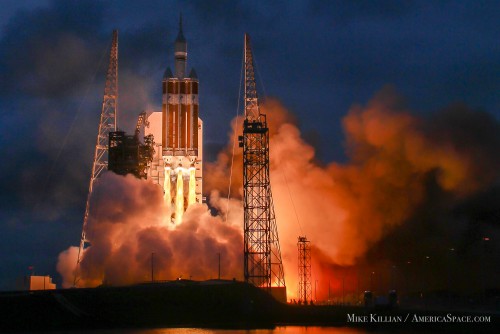
All told, of ULA’s 114 missions to date, the Atlas V has flown 59 times, the Delta II 28 times, and the Delta IV—in its Medium and Heavy configurations—on no fewer than 27 occasions. Between them, they have undertaken more than 60 dedicated military missions with classified NROL payloads and a wide range of communications, weather forecasting, ocean surveillance and early-warning satellites. Highlights of this military career included the heavyweight Mobile User Objective System (MUOS), which tipped the ULA payload scales at 15,000 pounds (6,800 kg) when its first member was launched in February 2012, as well as four flights by the X-37B Orbital Test Vehicle (OTV) unpiloted mini-shuttle.
Meanwhile, within the civilian and scientific spheres, ULA has delivered spacecraft to explore Earth’s Van Allen radiation belts, to search for water on the Moon, to investigate the gamma-ray Universe, to better understand the nature of the Sun, to identify distant “exoplanets,” to visit the Red Planet—via the Phoenix lander, the Curiosity rover, and more recently the Mars Atmosphere and Volatile Evolution (MAVEN) orbiter—and to voyage beyond the asteroid belt to Jupiter. Additionally, Atlas Vs have launched two of NASA’s Tracking and Data Relay Satellites (TDRS), as well as America’s first Orion deep-space vehicle and a pair of Orbital ATK Cygnus cargo craft to the International Space Station (ISS).
The launch rate to achieve these successes has been equally impressive. In 2009, ULA reached its peak by despatching no fewer than 16 missions. Eight Delta IIs, five Atlas Vs, and a trio of Delta IVs carried three military communications satellites, one commercial communications satellite, three weather-forecasting satellites, two navigation satellites, one classified reconnaissance satellite, one civilian Earth-imaging satellite, two military technology satellites, NASA’s Wide Infrared Survey Explorer (WISE) and Kepler observatories, and the Lunar Reconnaissance Orbiter (LRO) to the Moon.
With Sunday’s anticipated launch of EchoStar-XIX, ULA will wrap up a 13-flight year, thereby positioning 2016 in joint third place for the greatest number of missions in a single calendar year. This banner year for the company has been specifically highlighted by the September launch of NASA’s Origins, Spectral Interpretation, Resource Identification, Security, Regolith Explorer (OSIRIS-REx) sample-return mission to Asteroid Bennu. Looking ahead to 2017, the new year is expected to kick off with two flights in less than a week in January, as Atlas Vs launch from Cape Canaveral and Vandenberg with military payloads. Also on tap for 2017 are the final planned pair of flights for the Delta II, a third Cygnus resupply mission to the ISS, and a third TDRS communications satellite for NASA. All told, 2017 may see as many as 15 launches for ULA.
Be sure to “Like” AmericaSpace on Facebook and follow us on Twitter: @AmericaSpace




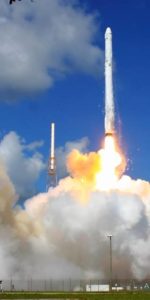
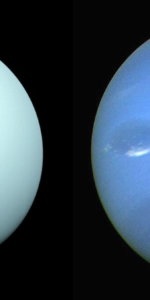
“Also on tap for 2017 are the final planned pair of flights for the Delta II,”
It could be useful if ULA kept flying the kerolox Delta II with the new, low cost, and highly efficient kerolox AR1 rocket engine.
Consider the Delta III design.
“While the propellant load and gross mass of the stage were nearly identical to the Delta II, the diameter of the kerosene tank was increased from 2.4 meters to 4 meters. This reduced the overall length of the vehicle and allowed the Delta III to use the same launch facilities as the Delta II with only minor modifications.[1]”
From: ‘Delta III’ Wikipedia
If it made sense to have the kerosene tank “increased from 2.4 meters to 4 meters” for the one Rocketdyne RS-27A with 244,094 lbs of thrust, then using short 5.4 meter diameter tanks for the 500,000 lb thrust AR1 could also make good sense.
Basically, shorten the 5.4 m, or 18 ft, diameter first stage tanks of the new Vulcan launcher and use the same Orbital ATK GEM 63XL SRBs as the Vulcan. True, the methane tank for the Vulcan might not be optimal for RP-1 or RP-2, but then again optimize for cost and robustness, not weight.
ULA could use the same, or a stretched, version of the current second stage that is currently used for the Delta II and powered by the AJ10-118K engine. A different version of the AJ10 rocket engine, the AJ10-190 engine, powered the Space Shuttle Orbital Maneuvering System and will also be used on the Orion Service Module. The reliable AJ10 rocket engine could be available for many decades to come.
Various second stages of the Vulcan launcher could also eventually be usable second stage options for a modified Delta II or possibly even the second stage of the Orbital ATK Antares launcher.
Why go through the costs of keeping and modifying the Delta II?
ULA keeps the lower costs, launch mission flexibility, and product diversity backup option of a single kerolox engine powered medium sized Delta II launcher with its flight proven and reliable upper stage and avoids getting locked into the costs, risks, and product limitations of eventually only having the one large Vulcan launcher.
Since the modified Delta II’s first stage tanks could share significant manufacturing commonality with the first stage of the Vulcan, some costs could be reduced.
Another possible option could be to sometimes add Rutherford kerolox rocket engines around the AR1 engine and use those small engines for vertically landing the first stage and thus offer a reusability option for the first stage of the modified Delta II.
Note that a wide and squat modified Delta II first stage would have a low center of gravity and this could be quite helpful when doing a vertical landing.
Mid-air recovery of the first stage could also eventually be a viable option.
See: ‘The Mid-Air Recovery System for the Air Launched Cruise Missile’
At: http://arc.aiaa.org/doi/abs/10.2514/6.1981-1915
Using Orbital ATK’s GEM 63XL SRBs, and possibly larger future SRBs, would offer significant options in the modified Delta II’s launching of diverse payloads.
Note also that a wide and squat modified Delta II first stage would have a low center of gravity and this could be quite useful if doing a vertical landing.
If commercial, science, and national security payloads significantly decrease in weight, a low-cost and modified Delta II powered by an AR1 engine and offering first stage reusability options could be quite profitable in servicing those launch markets.
Another small engine option for making an AR1 powered modified Delta II first stage reusable:
“Baby Bantam (kerosene/LOX) – In June 2014, Aerojet Rocketdyne announced that they had ‘manufactured and successfully tested an engine which had been entirely 3D printed.’ The engine is a 22 kN (5,000 lbf) thrust engine.[5]”
From: ‘Aerojet Rocketdyne’ Wikipedia
At: https://en.wikipedia.org/wiki/Aerojet_Rocketdyne#AR1